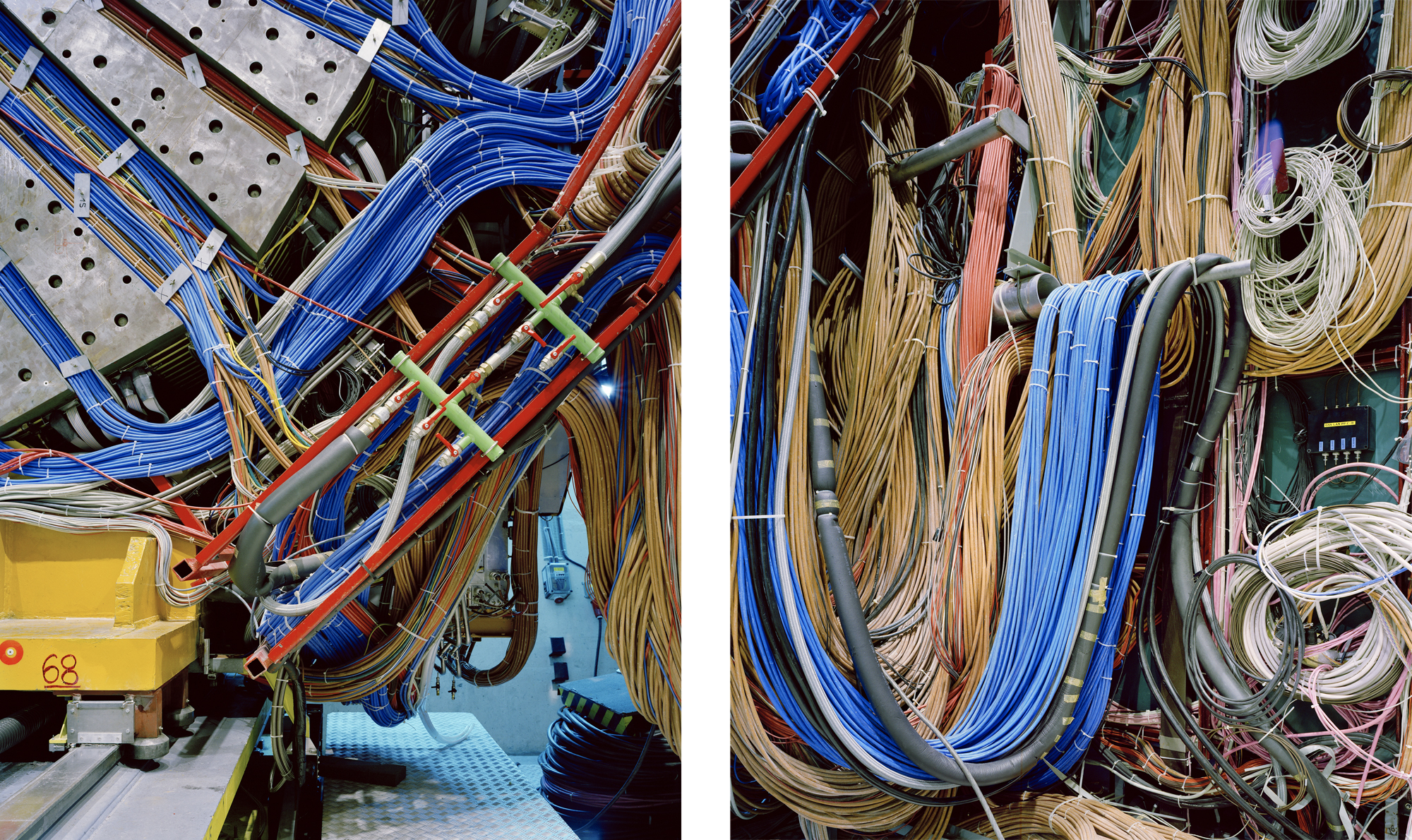Born in Geneva in 1949, Nicolas Faure left his native city in 1976 to settle in New York and learn the technique of photography. Self-taught, he acquired his training by working in a lab and shooting documentary photos for publications like Time Life Books and GEO. After taking part in the 1978 group project American Vision, Faure returned to Switzerland in 1982.
Through group and individual portraits, he observed the relationship the Swiss have with clothing and popular forms of leisure (tennis, swimming pools, bicycles, etc.). In the early 1990s his art began to take shape around Swiss landscapes that had been refashioned by human beings and their activities. His body of photographic work now developed in three successive series, Pierres fétiches (fetish stones), Schweizer Autobahnen (Swiss motorways) and Paysage A (landscape A).
In 1991, when he started to focus on the erratic stones one sees scattered over contemporary landscapes (Pierres fétiches), Faure was looking to examine our cultural, mythic and natural relationship to the land and its configuration, its relief. The landscapes punctuated by these modest menhirs represent sites having a strong symbolic value. By noting these details of our surroundings which generally go unremarked, Faure raises a broader set of questions vis-à-vis the perception we have of our environment. What do we in fact look at when we travel through different places? Do we actually see what we look at? Through his images of stones in the foreground, Faure offers us a novel journey that renews our perception of Switzerland.
In the year 2000 he began to centre his approach on a single theme, namely, the network of Swiss motorways (Schweizer Autobahnen). This new genre of landscapes allowed the artist to explore the passage of time as it is materialised in the reworked environment. More recently, Faure’s photographic eye, shifting to the areas alongside motorways, has begun to focus on both the surrounding artificial gardens that are intended to make them more pleasant (Paysage A), and the plants specifically chosen for their resistance and easy upkeep in an environment that is in fact hostile to nature.
In these three major series, the artist’s work highlights the clues to a Swiss identity that have been surreptitiously introduced into the landscape. Nicolas Faure has been teaching photography at École cantonale d'art in Lausanne (ECAL) since 2001. His work has been exhibited in Switzerland and throughout the rest of Europe, as well as the United States, notably at MoMA in New York, the Musée de l’Elysée in Lausanne, the Fotomuseum in Winterthur and the Museum für Gestaltung in Zurich.
Through group and individual portraits, he observed the relationship the Swiss have with clothing and popular forms of leisure (tennis, swimming pools, bicycles, etc.). In the early 1990s his art began to take shape around Swiss landscapes that had been refashioned by human beings and their activities. His body of photographic work now developed in three successive series, Pierres fétiches (fetish stones), Schweizer Autobahnen (Swiss motorways) and Paysage A (landscape A).
In 1991, when he started to focus on the erratic stones one sees scattered over contemporary landscapes (Pierres fétiches), Faure was looking to examine our cultural, mythic and natural relationship to the land and its configuration, its relief. The landscapes punctuated by these modest menhirs represent sites having a strong symbolic value. By noting these details of our surroundings which generally go unremarked, Faure raises a broader set of questions vis-à-vis the perception we have of our environment. What do we in fact look at when we travel through different places? Do we actually see what we look at? Through his images of stones in the foreground, Faure offers us a novel journey that renews our perception of Switzerland.
In the year 2000 he began to centre his approach on a single theme, namely, the network of Swiss motorways (Schweizer Autobahnen). This new genre of landscapes allowed the artist to explore the passage of time as it is materialised in the reworked environment. More recently, Faure’s photographic eye, shifting to the areas alongside motorways, has begun to focus on both the surrounding artificial gardens that are intended to make them more pleasant (Paysage A), and the plants specifically chosen for their resistance and easy upkeep in an environment that is in fact hostile to nature.
In these three major series, the artist’s work highlights the clues to a Swiss identity that have been surreptitiously introduced into the landscape. Nicolas Faure has been teaching photography at École cantonale d'art in Lausanne (ECAL) since 2001. His work has been exhibited in Switzerland and throughout the rest of Europe, as well as the United States, notably at MoMA in New York, the Musée de l’Elysée in Lausanne, the Fotomuseum in Winterthur and the Museum für Gestaltung in Zurich.



